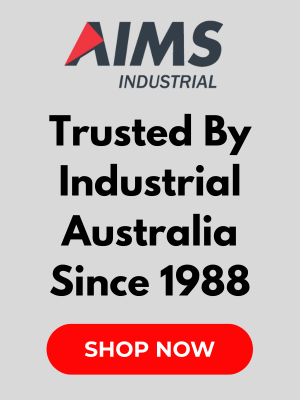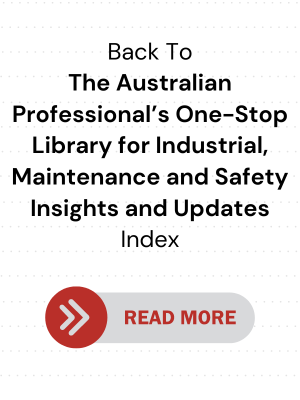How to Prevent Slips, Trips and Falls in the Workplace

.png)
We’ll state the obvious here: People slip, trip and fall. Often by accident. And they sustain injuries. Some even die.
Update: According to 2023 data by Safe Work Australia (SWA), there were around 28,100 claims from accidents caused by "slips, trips and falls", which also collectively rank as the second top mechanism of incident (after body stressing) of workplace injuries. (More SWA statistics here.)
- What qualifies as a slip, trip and fall
- Why you should care about workplace safety
- How to prevent slips, trips and falls in the workplace
What qualifies as a slip, trip and fall
Here’s how SWA defines them:
- Slips occur when your foot loses traction with the ground surface due to inappropriate footwear or walking on slippery floor surfaces that are highly polished, wet or greasy.
- Trips occur when you catch your foot on an object or surface. In most cases, people trip on low obstacles that are hard to spot, such as uneven edges in flooring, loose mats, open drawers, untidy tools or electrical cables.
- Falls can result from a slip or trip, but many occur during falls from low heights such as steps, stairs and curbs, falling into a hole or a ditch or into water.
SWA emphasised the importance of minimising the risks of working at heights, which is considered a high-risk activity. It's even one of the leading causes of workplace-related serious injuries and deaths, so we hope you see the value in investing in height safety and fall protection equipment.
Why you should care about workplace safety
According to Safe Work NSW: "Employers or businesses, or anyone who falls under the definition of a ‘person conducting a business or undertaking’ (a PCBU), has legal obligations under work health and safety (WHS) laws."
Put simply, if accidents happen in your business, to any of your staff, that’s bad news for you. We’re talking about lots of work hours lost, which translate to negative productivity. What’s worse: We’re talking about big amounts of dollars you might spend on claims and legal obligations.
The good news: Slips, trips and falls are 100% preventable! It’s all about education and proper implementation of safety measures.
Check out this infographic on how you can prevent slips, trips and falls in your workplace.
Protect your workforce from costly accidents. Shop for anti-slip solutions today
How to prevent slips, trips and falls in the workplace
EDUCATE your business about the importance of occupational safety:
Safety is everyone’s responsibility. While the guiding principles are usually designed from the top and executed down, the value of workplace safety should be appreciated by everyone across the board, regardless of function or role.
At the management level: Design safety procedures and conduct training to educate your workers on how to “recognize and avoid” slip, trip and fall hazards. Make sure to provide the proper personal protective equipment (PPE) they need for the job.
-
Get familiar with the occupational safety-related legislation that applies to your business (which varies on federal and state levels). These references from SWA and Comcare are good places to start. If in doubt, consult a lawyer specialising in WorkCover.
-
Consult or hire a safety officer, where relevant or as required by law (depending on your business size or industry).
At the workforce level: Ensure that your staff are aware, and fully understand, the safety procedures in place -- from the guidelines they observe to the gear they wear, to the best practices they do before, during and after work.
IMPLEMENT safety measures:
Once the mindset of safety is in place, it becomes easier to carry out these safety measures to mitigate the risks of slips, trips and falls on your workforce. If you’re a one-man team or a solo tradesman, the same applies, albeit on a simpler scale, to your workshop.
Streamline the workflow: It’s all about the process. Visualize the end-to-end movement of people, materials and equipment across the main production floors and other relevant areas (quality assurance, storage etc).
-
Consider how work is managed and done such that rushing, overcrowding, spills and rubbish build-up are minimised/avoided.
-
Plan pedestrian and vehicle routes so there is minimal overlap/crossing of paths among them.
Keep the pathways clear and properly lit - INSIDE AND OUT.
-
Keep walkways free of debris, clutter, obstacles (eg. wrinkled carpets and loose mats) and spills.
-
Make sure the flooring is even and free of loose/wrinkled carpets/tiles, broken tiles etc.
-
Place power outlets near “points of use” to minimise/eliminate trailing cables and extension cords.
-
Provide adequate lighting that is free of glare and shadows, so that potential slip or trip hazards are clearly visible.
-
Don’t ignore the immediate outdoors within the workplace, so check for build-up of slippery elements, such as moss, sludge and vegetation.
Keep equipment in good shape, free of leaks and loose parts:
-
Check for debris coming from worn, torn or misplaced pieces.
-
Check machines, hoses and pipes for leaks, puddles and spills from chemicals, lubricants and oil.
-
Make sure the ladders, scaffolding etc are functioning properly. When using them, make sure to install them correctly on a stable platform.
Ensure good housekeeping routine:
-
During cleaning, erect caution signs to alert staff that an area is wet or slippery, so they avoid it or proceed with caution.
-
Make sure there is no build-up of polish on the floor.
-
Make sure there is no excessive residue of cleaning detergent.
(Here are things to consider when buying anti-slip products for safety and compliance: Quick Guide to Anti-Slip Products)
PROVIDE safety gear and make sure it's used properly -- from TOE to HEAD.
Sure, protection usually starts from the head (figuratively), but in the context of slips, trips and falls, the accident usually occurs at the feet. Nevertheless, when a fall is not totally avoided, you want to make sure bodily injuries are minimised, especially on critical body parts:
-
Firstly, and most importantly, make sure your staff know how to put the safety gear on, move around with it, and discard/store it after use.
-
Footwear is (almost) everything. Good slip resistance is paramount. Make sure the footwear is applicable for either wet or dry conditions.
-
Provide fall protection systems (eg. harnesses) when necessary.
Provide safety markings and signs:
-
Install highly visible warning signs to draw attention to potential hazards.
-
Mark walkways with safety tape to guide workers to the right path.
-
Block off trip hazards with barricades and safety cones.
Invest in good anti-slip solutions from a trusted supplier:
-
Install anti-slip mats, stair treads, stair nosings and ladder rung covers that provide traction and firm footing.
-
Wear work boots and shoes with slip-resistant soles.
AIMS' Note on Buying PPE and Workwear
- Hazard assessment: Identify the specific hazards you will likely be facing in your work environment. Consider potential risks such as chemical exposure, falling objects, loud noises, electrical hazards or biohazards. This assessment will guide you in selecting the appropriate PPE for the job.
- Appropriate materials: Different materials offer various protective qualities. Consider flame-resistant (FR) materials for fire hazards, chemical-resistant fabrics for handling hazardous liquids and high-visibility options for work in low-light environments.
- Compliance to occupational safety standards: Opt for PPE that meets the pertinent Australia Standard (AS), although some brands -- especially imports -- will have other compliance markings such as ANSI, OSHA, ANSI, NIOSH, oSA etc. Look for certifications on the product label to ensure the equipment has undergone rigorous testing.
- Proper fit and comfort: Proper fit is crucial for both comfort, dexterity and protection. Ill-fitting clothing can snag on machinery or restrict movement, potentially creating additional hazards. Choose sizes that allow for layering in cold weather without being overly bulky and consider adjustable options for items like hard hats or respirators.
- Maintenance and replacement: Inspect PPE before each use for signs of wear, tear or damage. Follow (and factor in) the manufacturer's instructions for cleaning and storage. Some materials may require specialised laundering, while others can be machine-washed. Check for durability to ensure the clothing can withstand frequent use and cleaning. Replace damaged or expired PPE immediately to guarantee your safety.
- Training: Ensure you and any employees understand how to properly use, wear, adjust, maintain and store PPE and workwear. Improper use can negate its protective benefits.



.png)

